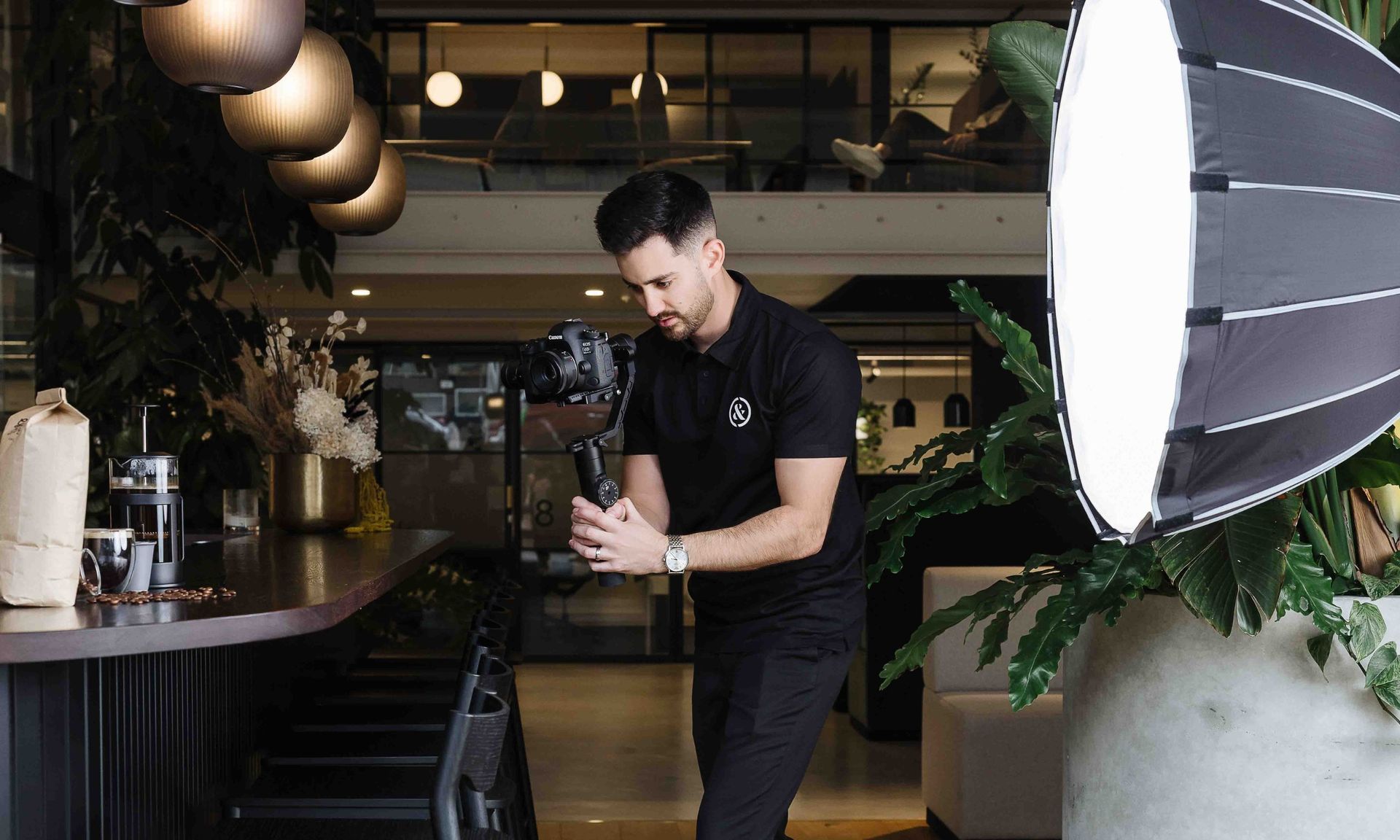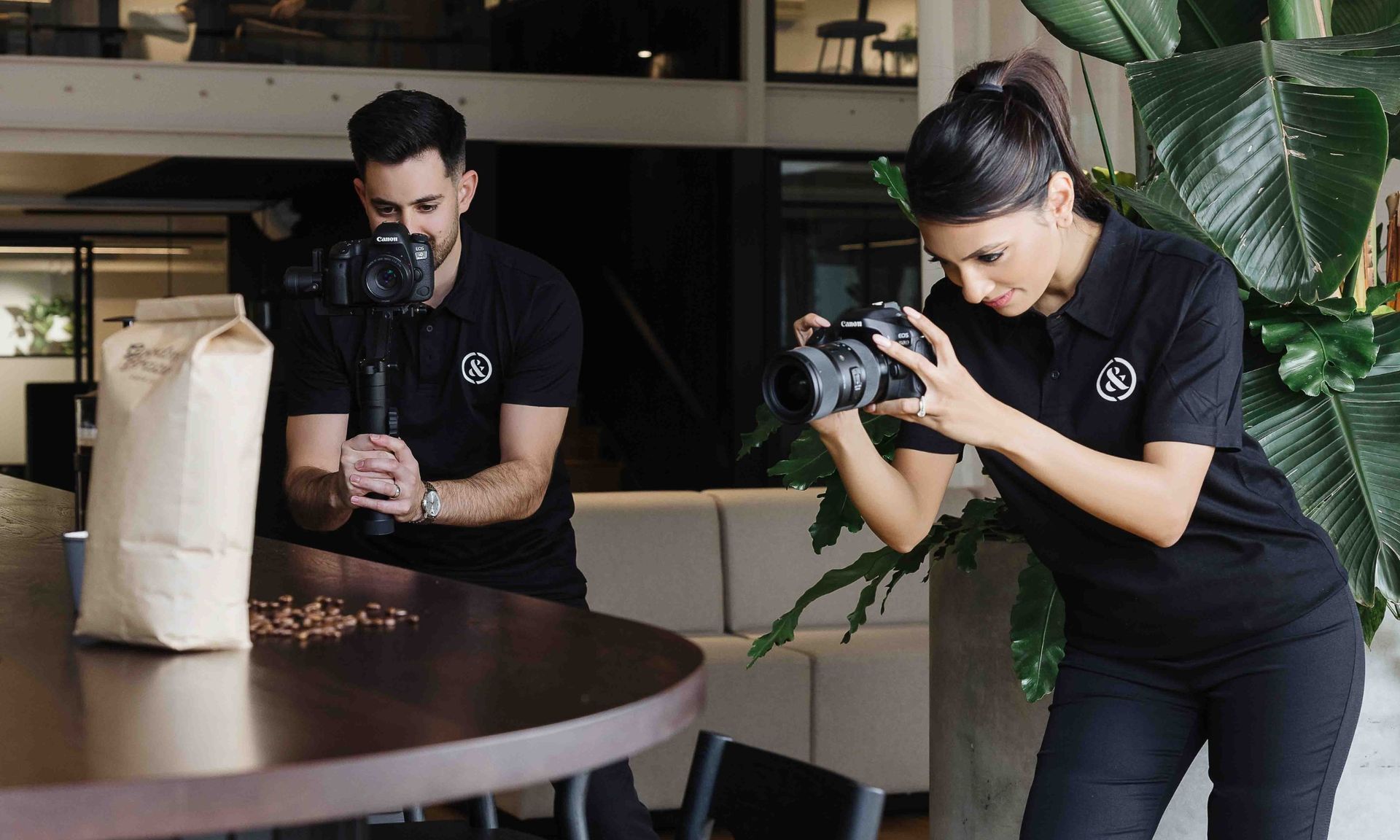How to share your marketing videos for maximum reach
How to share your marketing videos for maximum reach
Producing a great video is a major milestone, but making sure it reaches the right audience is just as important. For many small to medium-sized businesses, the biggest challenge isn’t producing video content. It’s knowing how to share it in a way that actually drives results.
That’s where a smart distribution strategy comes in. Video marketing isn’t just about making engaging content — it’s about making sure the right people see it, at the right time, and on the right platforms.
ARTICLE CONTENTS
What this article will cover
In this article, we’ll walk you through practical and effective ways to share your business videos for maximum reach. Whether you’ve just launched a brand story video or have a bank of content waiting to be published, we’ll help you build a video distribution strategy that gets your content seen - and working hard for your brand.
Why distribution matters
How distribution turns great content into real business outcomes by getting it in front of the right audience.
Building a video distribution strategy
Covers how to align video sharing with your goals, target audience, and platform-specific content styles for better outcomes.
Where and how to share your videos
A breakdown of the most effective channels and how to tailor video content for each.
Repurposing your video content
Practical ideas for reusing videos across platforms and formats to stay visible, fill your content calendar, and maximise ROI.
Measuring the success of your video sharing efforts
How to set goals, track performance with the right tools, and use insights to optimise future video marketing decisions.
Why distribution matters just as much as creation
Even the most polished, professionally produced video won’t deliver value if no one sees it. That’s the reality many businesses face after investing in video marketing without a plan for what happens next.
Hitting “publish” is only the beginning. Without a distribution strategy, videos often get buried on social feeds, overlooked on websites, or lost in email inboxes. And when that happens, the time, money, and effort put into creating them doesn’t result in real outcomes — like brand awareness, engagement, or leads.
Distribution is “the last mile in content marketing” - the final step that determines whether your content actually reaches and connects with your intended audience (Forbes, 2018). A well-executed video distribution strategy ensures your content is shared in the right places, tailored for each platform, and timed to match your audience’s behaviour.
It's not just about working hard, it's about working smart! With a plan in place, your videos can do exactly what they were designed to do: build connection, deliver value, and support your wider marketing goals.
Building a video distribution strategy for your business
Before you start sharing your video across every platform available, take a step back and build a plan that aligns with your goals, audience, and content type. A strong distribution strategy ensures your video gets the visibility it deserves — and supports your wider marketing efforts.
Here’s what to consider when creating your video distribution strategy:
Know your goals
Start with the outcome in mind. Are you trying to raise brand awareness? Drive traffic to your website? Increase sales or enquiries? Your goal will influence where and how you share your video — and the type of call-to-action you include. Defining this early gives your distribution plan structure and ensures every share serves a clear purpose.
Identify your audience & where they spend time
Different platforms attract different audiences. Think about who you’re trying to reach and which channels they use most. For example, business to business (B2B) audiences may engage more on LinkedIn, while business to consumer (B2C) audiences might respond better to Facebook, Instagram, or TikTok. This helps you focus your efforts where they matter most.
Choose the right format and length
Tailor your content to each platform. A 90-second brand video might work well on your website or YouTube, but a 15-second teaser could be better suited for Instagram reels or stories. Portrait, square, or landscape? Your choice should match the platform’s native style.
Plan for multiple placements
Don’t rely on a single upload. Consider using a mix of owned (your website, social channels, email list), earned (media coverage, partnerships), and paid (ads or boosted posts). This not only increases visibility but also reinforces your message across different touchpoints, building stronger brand recognition.
Where and how to share your videos
Once your video is ready and your distribution plan is in place, the next step is choosing the right platforms to share it. Each channel serves a different purpose, and getting the most from your content means tailoring it to fit the strengths of each one — rather than sharing the same version everywhere.
Social media
Social media is where most people discover and engage with video content, but success here depends on how well your video is adapted to each platform. Instagram and Facebook are ideal for short-form content and stories. Adding captions, strong visuals, and a clear call-to-action can boost engagement. LinkedIn is more effective for B2B content, brand stories, and behind-the-scenes clips, especially when the tone is professional yet authentic. Platforms like TikTok or Instagram reels work best for short, attention-grabbing videos that are paced quickly and framed for mobile viewing. Organic posts are useful for building engagement with your followers, while paid promotion helps you reach new, targeted audiences. Boosting high-performing posts is often a smart way to extend their visibility.
Website & blog
Your website and blog are key components of your owned content strategy, and video plays an important role in improving how visitors interact with your site. Adding videos to your homepage or landing pages — especially above the fold — can increase time spent on site and improve conversion rates. Embedding video in blog posts supports SEO, keeps readers engaged for longer, and helps communicate complex information visually. Testimonials, service explainers, or brand introductions all work well in these areas and give you full control over how content is presented.
Youtube
YouTube is not just a hosting platform — it’s one of the most powerful search engines available. Optimising your videos for YouTube can help build long-term visibility and drive traffic. That means creating keyword-rich titles and descriptions, using relevant tags, uploading custom thumbnails, and organising videos into playlists. Consistent branding across your channel builds credibility and makes it easier for users to find and binge your content. Tools like end screens and cards can guide viewers to take the next step after watching.
Email marketing
Email marketing remains one of the most direct and cost-effective ways to share video content. While you typically won’t embed a full video in an email, linking to it with a thumbnail image or short animated preview can boost click-through rates. Whether you're announcing a new product, sharing a customer story, or recapping an event, videos in email help make messages more engaging and easier to act on. Plus, email platforms make it easy to track opens and clicks so you can see what’s working.
Collaborators
Beyond your owned platforms, collaborators and partner channels can help expand your reach. For example, suppliers, clients, or business partners may be willing to share your video with their own audiences, especially if the content features them or tells a shared story. Co-marketing opportunities or joint campaigns are a great way to increase visibility without spending more on ads. Even resharing a customer testimonial on their profile can amplify your reach through a trusted, third-party voice.
Paid advertising
Finally, paid advertising allows you to reach targeted groups with precision. Whether you’re running video ads on social platforms like Facebook, LinkedIn, or TikTok — or using YouTube or Google’s display network — paid campaigns give you control over who sees your video and when. You can target by location, demographics, interests, or past website behaviour, and use A/B testing to learn which versions perform best. Short, focused videos with a clear message and CTA tend to work best in these campaigns.
Sharing your video across multiple platforms isn’t about being everywhere - it’s about being strategic. When you tailor your approach to each channel, you give your content the best chance to be seen, remembered, and acted on.
Repurposing your video content to extend its value
Creating a strong video is an investment, but its value doesn’t end once it's published. With the right approach, a single video can fuel your content strategy for weeks, or even months by being repurposed into multiple formats. This not only extends its reach but also helps you show up consistently across platforms without always starting from scratch.
Start by identifying which parts of your video can be used elsewhere. A full-length brand story, for example, can be broken into shorter clips for social media, quotes for graphics, or even audio snippets for use in reels or podcasts. You can turn behind-the-scenes footage into Instagram stories, or pull standout customer testimonials into standalone video posts. These shorter versions can help tease the original video, or serve as their own pieces of value-driven content.
Repurposing also gives you the chance to tailor content to different platforms and audiences. What performs well on LinkedIn might need a tighter, more visual edit for Instagram. A video filmed in landscape might be re-edited in portrait format for stories or reels. By adjusting content style and format, you can maximise how and where it’s shared without diluting your brand message.
The benefit of this approach isn’t just creative efficiency, it’s also about staying visible. Video algorithms often reward consistency, so showing up with fresh content, even if it's drawn from the same core asset, can increase your reach over time. Plus, it makes your marketing efforts more sustainable by getting more mileage out of every video you produce.
Repurposing is not about recycling for the sake of it - it’s about being intentional. When done well, it helps you stay top-of-mind, fill your content calendar with ease, and make the most of every piece of content you invest in.

How to measure the success of your video sharing efforts
Sharing your video is one thing - knowing if it’s working is another. To get real value from your video marketing, you need to track how your content performs and use that data to guide future decisions.
Step 1
Start by setting clear goals
If your aim is brand awareness, focus on reach, views, watch time and impressions. If you’re after leads or sales, look at click-throughs and conversions. The metrics you prioritise should match the purpose behind your video.
Step 2
Use platform-specific tools to gather insights
YouTube Studio shows views, watch time, and audience retention. Meta Business Suite tracks reach and engagement on Facebook and Instagram. LinkedIn offers data on impressions, clicks, and viewer demographics. For website videos, tools like Google Analytics can show time on page and actions taken after viewing.
Apply your insights to refine your strategy
A short teaser might outperform a full video on social media, while the longer version does better on your website. These insights help you refine what types of videos you produce and where you share them.
Step 3
Review results
Review your results regularly, even if you’re not running a paid campaign. The more you understand what’s working, the easier it becomes to improve — and get better results from every video you put out.
Step 4
Conclusion
A strong video can capture attention - but a smart distribution strategy is what ensures it actually makes an impact. For small to medium-sized businesses, sharing your content effectively is just as important as creating it.
By planning where and how to share each video, tailoring content for different platforms, and repurposing it into multiple formats, you give your video a much longer shelf life. More importantly, you reach the people who matter most - your target audience. Distribution doesn’t have to be complicated. With clear goals, the right tools, and a consistent approach, you can turn a single piece of content into a powerful marketing asset that works across channels.
If you’re ready to get more value from your video marketing, Clarke & Clarke can help you build a strategy that’s not only creative, but strategic - helping your content reach the right people, in the right places, at the right time.
Frequently asked questions
Still have questions about how to get the most out of your video content? These FAQs cover some of the most common things SMBs want to know when it comes to video distribution - from platforms and formats to performance tracking.
What’s the best platform to share my marketing videos on?
There’s no one-size-fits-all answer - it depends on your goals and audience. Social media is great for visibility, while your website helps drive conversions. YouTube supports long-term search visibility, and email works well for targeted updates. Choose platforms based on where your audience spends time.
How long should my marketing video be?
It depends on where you’re sharing it. Short-form videos (10–30 seconds) work well on social media, especially for ads or reels. Longer videos (60–90 seconds or more) are better suited for your website, YouTube, or LinkedIn, where viewers expect more in-depth content.
Can I share the same video on multiple platforms?
Yes, but it’s better to tweak it for each platform. Change the length, format (portrait, square, or landscape), and messaging to match what performs best on each channel. Repurposing with intention gives your content a longer life and better results.
How do I know if my video distribution strategy is working?
Set clear goals first (e.g., brand awareness, website traffic, or enquiries), then track performance using platform-specific tools. Look at metrics like views, watch time, engagement, click-through rates, and conversions. These insights will help guide your future video strategy.
Sharing your video across multiple platforms isn’t about being everywhere - it’s about being strategic. When you tailor your approach to each channel, you give your content the best chance to be seen, remembered, and acted on.
















